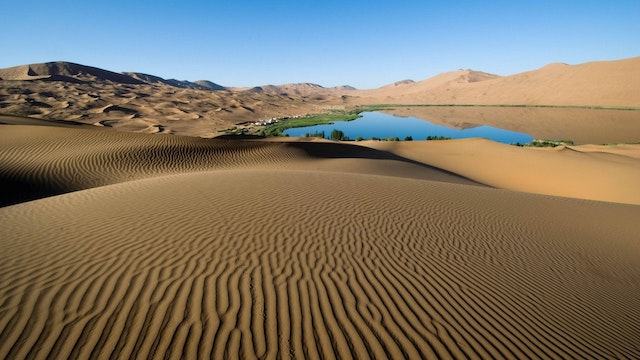Deserts are a vital part of our planet’s ecosystem. These biomes support biodiversity and habitat and provide various essential goods and services for people. Many plants that grow in desert environments have adapted to conserve water. Some store it in their leaves, stems, or roots, while others use a waxy coating to help prevent evaporation.
Contents
Water Availability
Deserts are among the most delicate and fragile biomes on Earth. They receive little or no rain; water loss through plant reclamation (transpiration) and evaporation is high. Many deserts lack drainage to a river or lake, and rainwater collects in large depressions called basins. These basins eventually evaporate, leaving salt-surfaced lake beds called playas. Water is essential to life in deserts, but shortages are a severe problem in some places, and this is where sustainable water resources like Cadiz Water Project come in.
For much of the 20th century, water policy in the Western United States reflected a management philosophy that built large-scale, centralized systems to move water in space and time. Those systems put pressure on the natural aridity of the West. To make a sustainable roadmap for water in the western United States, managers and planners must rethink assumptions and definitions about water supply; work to reduce demand through conservation and efficiency programs; develop improved systems for managing water; and integrate climate change into all water system decisions. These changes require new technology, economic approaches, regulatory requirements, and education.
Water Retention
In deserts, plants have developed several strategies to help them store water. For instance, cacti have unique means of conserving water through their thick, fleshy, and swollen parts. Some desert trees and shrubs also use rain or fog droplets as a source of water. They have fine hairs on their leaves that intercept fog droplets and merge them into the water before the droplet reaches their roots. Other desert animals, such as reptiles, have also developed behavioral adaptations to survive in the extreme conditions of aridity and heat. For example, the thorny devil, a lizard from Australia’s Outback, has tiny grooves and channels on its body to catch rain and dew. Understanding how soil water is coupled to precipitation across different landscapes is essential for desert ecosystem management and forecasting a changing climate. A comprehensive long-term dataset of soil water dynamics is needed to understand better how plant growth and other processes are influenced by water availability in the context of changing climate.
Water Cycle
The water cycle is a series of processes that change how water moves from one place to another. It is a natural process that has a significant impact on the ecosystem. The cycle begins with evaporation, where the sun’s heat makes water evaporate. The vapors rise into the atmosphere, forming clouds and fog. After evaporation, water moves to storage locations in the oceans, lakes, rivers, and underground aquifers. These places can store water for a long time but are also vulnerable to climate change. Humans, land use, and climate change affect the water cycle differently. Understanding these impacts will help us to work toward using water sustainably.
Water Pollution
Water is one of the most essential elements in the ecosystem. Plants, animals, and human beings use it. When water is polluted, it can have many different environmental effects. It can be toxic, unfit for human use, and harmful to wildlife. This is especially true in deserts. Various factors, including natural weathering and manufactured pollutants, can cause water pollution. The most common water contaminants include bacteria, viruses, parasites, fertilizers, pesticides, pharmaceutical products, nitrates, phosphates, and plastics. Some of these pollutants, such as heavy metals and radioactive substances, can be highly hazardous. They can also cause health issues like diarrhea, cholera, and dysentery.





